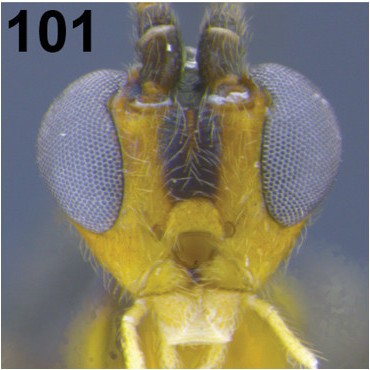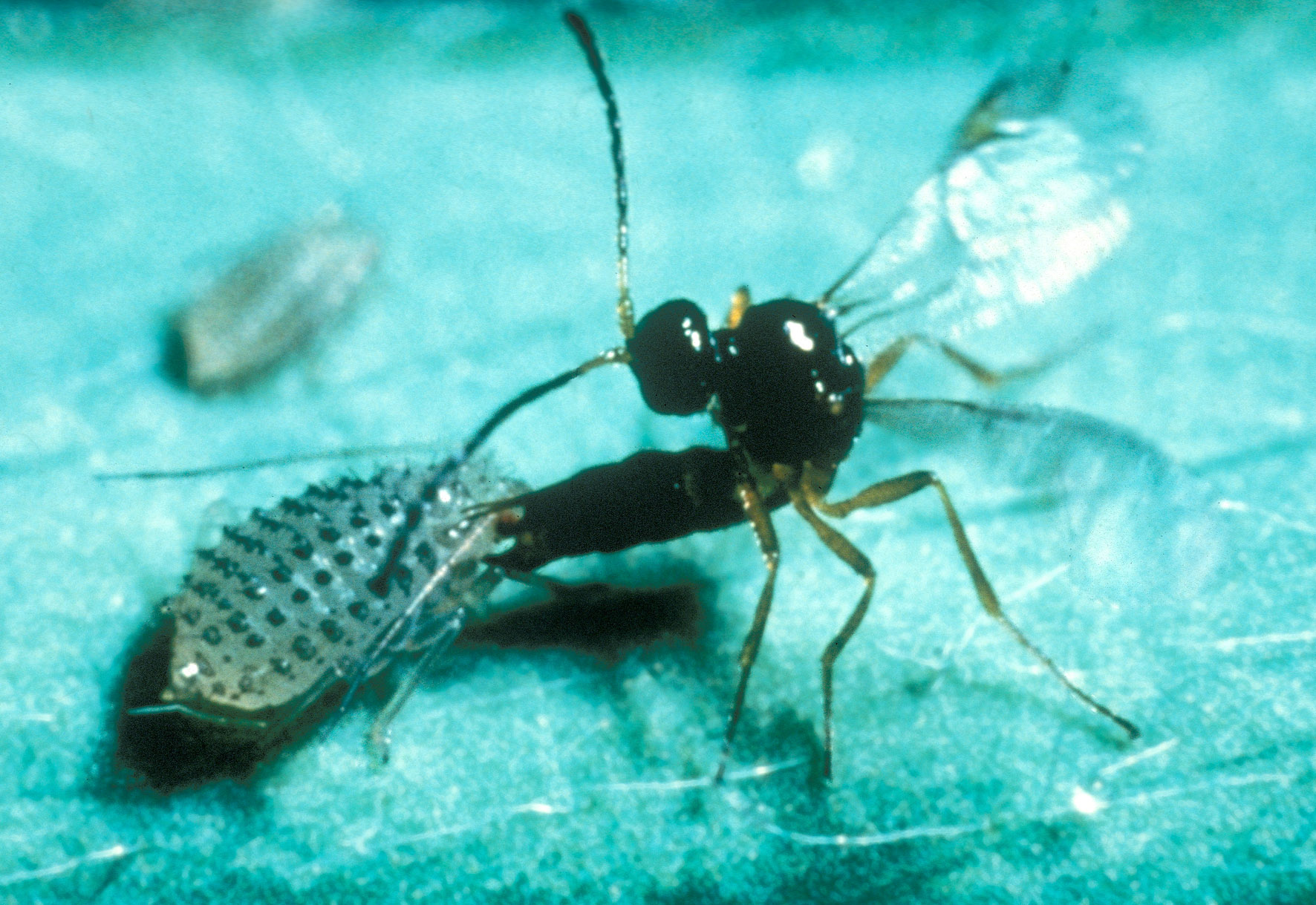|
Diachasma Alloeum
''Diachasma alloeum'' is a small wasp in the family Braconidae. It is a parasitoid of ''Rhagoletis pomonella'', the apple maggot. The wasp lays its eggs into third-instar larvae of the fly, which then develop after the larvae have pupated. The immature wasps then eat the fly larvae and overwinter inside the fly puparia. ''D. alloeum'' wasps attacking ''R. pomonella'' in apples appear to be undergoing a speciation event in concert with their hosts. This is an example of sequential sympatric speciation Sympatric speciation is the evolution of a new species from a surviving Common descent, ancestral species while both continue to inhabit the same geographic region. In evolutionary biology and biogeography, ''sympatric'' and ''sympatry'' are ter .... References Braconidae Hymenoptera of North America Insects described in 1956 {{Ichneumonoidea-stub ... [...More Info...] [...Related Items...] OR: [Wikipedia] [Google] [Baidu] |
Carl Muesebeck
Carl Frederick William Muesebeck (24 September 1894 - 13 November 1987) was an American entomologist who specialized in the Hymenoptera. He worked at the insect identification division of the US Department of Agriculture and was also a research associate at the Smithsonian Institution. Muesebeck was born in Medina, New York where his parents William and Marie Koch had moved to in the 1880s. His father who worked as a tailor came from Stettin, Pomerania (the family name has variants that include Meusebach) and his mother was from Angermunde, east of Berlin. They had married in the United States. Muesebeck went to school in Medina and at Brockport High School, while also helping his father at his tailoring business. He joined Cornell University in 1912 and took an interest in mathematics and English. His interest in insects was sparked by studies under John Henry Comstock and Anna Botsford Comstock. Graduating with an interest in biology and entomology he joined the US department of a ... [...More Info...] [...Related Items...] OR: [Wikipedia] [Google] [Baidu] |
Braconidae
The Braconidae are a family of parasitoid wasps. After the closely related Ichneumonidae, braconids make up the second-largest family in the order Hymenoptera, with about 17,000 recognized species and many thousands more undescribed. One analysis estimated a total between 30,000 and 50,000, and another provided a narrower estimate between 42,000 and 43,000 species. Classification The Braconidae are currently divided into about 47 subfamilies and over 1000 genera, which include ''Aerophilus'', ''Aleiodes'', ''Apanteles'', ''Asobara'', ''Bracon (wasp), Bracon'', ''Cenocoelius'', ''Chaenusa'', ''Chorebus'', ''Cotesia'', ''Dacnusa'', ''Diachasma'', ''Dimeris'', ''Microgaster'', ''Opius'', ''Parapanteles'', ''Phaenocarpa'', ''Spathius'', and ''Syntretus.'' These fall into two major groups, informally called the cyclostomes and noncyclostomes. In cyclostome braconids, the Labrum (arthropod mouthpart), labrum and the lower part of the Clypeus (arthropod anatomy), clypeus are concave ... [...More Info...] [...Related Items...] OR: [Wikipedia] [Google] [Baidu] |
Parasitoid
In evolutionary ecology, a parasitoid is an organism that lives in close association with its host (biology), host at the host's expense, eventually resulting in the death of the host. Parasitoidism is one of six major evolutionarily stable strategy, evolutionary strategies within parasitism, distinguished by the fatal prognosis for the host, which makes the strategy close to predation. Among parasitoids, strategies range from living inside the host (''endoparasitism''), allowing it to continue growing before emerging as an adult, to Paralysis, paralysing the host and living outside it (''ectoparasitism''). Hosts can include other parasitoids, resulting in hyperparasitism; in the case of oak galls, up to five levels of parasitism are possible. Some parasitoids Behavior-altering parasite, influence their host's behaviour in ways that favour the propagation of the parasitoid. Parasitoids are found in a variety of Taxon, taxa across the insect superorder Endopterygota, whose compl ... [...More Info...] [...Related Items...] OR: [Wikipedia] [Google] [Baidu] |
Apple Maggot
The apple maggot (''Rhagoletis pomonella''), also known as the railroad worm (but distinct from the '' Phrixothrix'' beetle larva, also called railroad worm), is a species of fruit fly, and a pest of several types of fruits, mostly apples. This species evolved about 150 years ago through a sympatric shift from the native host hawthorn to the domesticated apple species ''Malus domestica'' in the northeastern United States. This fly is believed to have been accidentally spread to the western United States from the endemic eastern United States region through contaminated apples at multiple points throughout the 20th century. The apple maggot uses Batesian mimicry as a method of defense, with coloration resembling that of the forelegs and pedipalps of a jumping spider (family Salticidae). The adult form of this insect is about long, slightly smaller than a housefly. The larva, which is the stage of this insect's lifecycle that causes the actual damage to the fruit, is similar ... [...More Info...] [...Related Items...] OR: [Wikipedia] [Google] [Baidu] |
Speciation
Speciation is the evolutionary process by which populations evolve to become distinct species. The biologist Orator F. Cook coined the term in 1906 for cladogenesis, the splitting of lineages, as opposed to anagenesis, phyletic evolution within lineages. Charles Darwin was the first to describe the role of natural selection in speciation in his 1859 book ''On the Origin of Species''. He also identified sexual selection as a likely mechanism, but found it problematic. There are four geographic modes of speciation in nature, based on the extent to which speciating populations are isolated from one another: allopatric speciation, allopatric, peripatric speciation, peripatric, parapatric speciation, parapatric, and sympatric speciation, sympatric. Whether genetic drift is a minor or major contributor to speciation is the subject of much ongoing discussion. Rapid sympatric speciation can take place through polyploidy, such as by doubling of chromosome number; the result is progeny wh ... [...More Info...] [...Related Items...] OR: [Wikipedia] [Google] [Baidu] |
Sympatric Speciation
Sympatric speciation is the evolution of a new species from a surviving Common descent, ancestral species while both continue to inhabit the same geographic region. In evolutionary biology and biogeography, ''sympatric'' and ''sympatry'' are terms referring to organisms whose Range (biology), ranges overlap so that they occur together at least in some places. If these organisms are closely related (e.g. sister species), such a distribution may be the result of sympatric speciation. Etymologically, sympatry is derived . The term was coined by Edward Bagnall Poulton in 1904, who explains the derivation. Sympatric speciation is one of three traditional geographic modes of speciation.Futuyma, D. J. 2001. ''Evolution'' (2nd edition). Sinauer Associates, Inc. Allopatric speciation is the evolution of species caused by the geographic isolation of two or more populations of a species. In this case, divergence is facilitated by the absence of gene flow. Parapatric speciation is the evolut ... [...More Info...] [...Related Items...] OR: [Wikipedia] [Google] [Baidu] |
Hymenoptera Of North America
Hymenoptera is a large order (biology), order of insects, comprising the sawflies, wasps, bees, and ants. Over 150,000 living species of Hymenoptera have been described, in addition to over 2,000 extinct ones. Many of the species are Parasitoid wasp, parasitic. Females typically have a special ovipositor for inserting eggs into hosts or places that are otherwise inaccessible. This ovipositor is often modified into a stinger. The young develop through holometabolism (complete metamorphosis)—that is, they have a wormlike larval stage and an inactive pupal stage before they reach adulthood. Etymology The name Hymenoptera refers to the wings of the insects, but the original derivation is ambiguous. All references agree that the derivation involves the Ancient Greek wikt:πτερόν, πτερόν (''pteron'') for wing. The Ancient Greek wikt:ὑμήν, ὑμήν (''hymen'') for membrane provides a plausible etymology for the term because species in this order have membranous wings ... [...More Info...] [...Related Items...] OR: [Wikipedia] [Google] [Baidu] |



